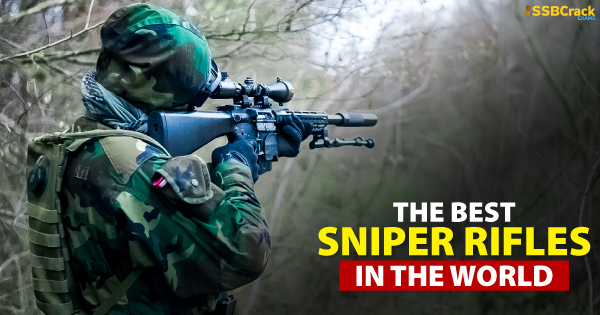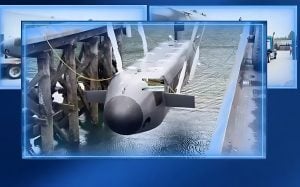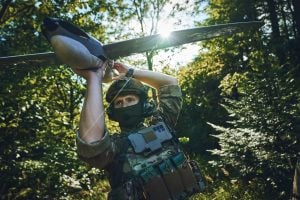A sniper rifle is high precision and highly accurate rifle that is used either for anti-material or anti-personnel missions and even to provide support to the troops engaged in combat.
Also, sniper rifles are popular in long-range modern combat and taking down precision targets. These are today’s best sniper rifles that any special forces personnel will covet for their work.
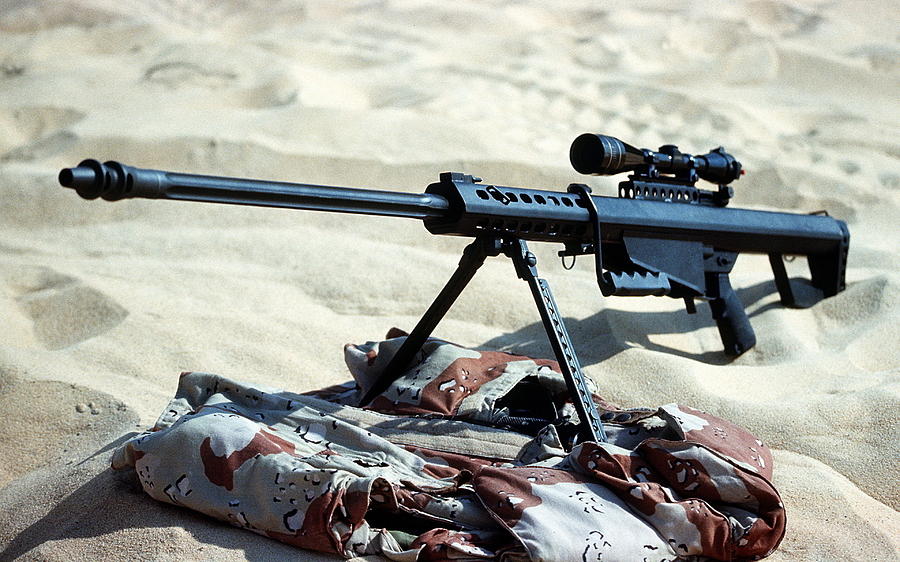
- The Barrett M82 is a semi-automatic anti-material rifle, designed and developed by Barrett Firearms Manufacturing company. The development of this powerful anti-material rifle began in the early 1980s. Working versions were ready by 1982, hence the designation M82. It is worth noting that the M82 is a company designation, rather than a US military designation. The company successfully sold 100 rifles to Swedish Armed Forces in 1989. In 1990-1991 US Marine Corps obtained around 125 of these rifles. Soon followed orders from the US Army and Air Force. Today this anti-material rifle is in service with nearly 60 countries and used by military and law enforcement forces. In a number of countries, this anti-material rifle is used as a long-range anti-personnel sniper weapon. The Barrett M82 is chambered for powerful 12.7×99 mm (.50 BMG) ammunition. This ammunition was originally developed for and used in Browning M2 heavy machine gun. Sometimes the Barrett M82 is referred as “Light Fifty” for its cartridge. This weapon has a unique recoil reduction mechanism. The muzzle brake is said to absorb 70% of the recoil. It reduces the forces acting on internal mechanisms and the shooter. This weapon is fed from 10-round detachable magazines.

- The Steyr Scharfschutzengewehr 69, or SSG 69 is an Austrian sniper rifle. Externally it resembles a hunting rifle, however, it was specially designed as a weapon for military and law enforcement forces. Since the mid1960s the Austrian Army was looking for an advanced sniper rifle to equip its own snipers. The Steyr SSG 69 is a bolt-action weapon. It is chambered for a standard NATO 7.62×51 mm (.308 Winchester) cartridge. At the time of its introduction in the late 1960s, this weapon was different than most contemporary sniper rifles. The design of the SSG 69 was rather unique. Some of its features were cutting-edge back in the late 1960s. It used synthetic materials for lightweight and cold-hammer-forged barrels for durability. Also, it had detachable magazines of unusual design. The SSG 69 sniper rifle is relatively compact. It comes with a 650 mm (25.6″) barrel. Furthermore, it a very light rifle. Modern equivalents with similar performance weigh nearly twice as much. Also, the Austrian SSG 69 proved to be a reliable and durable design.
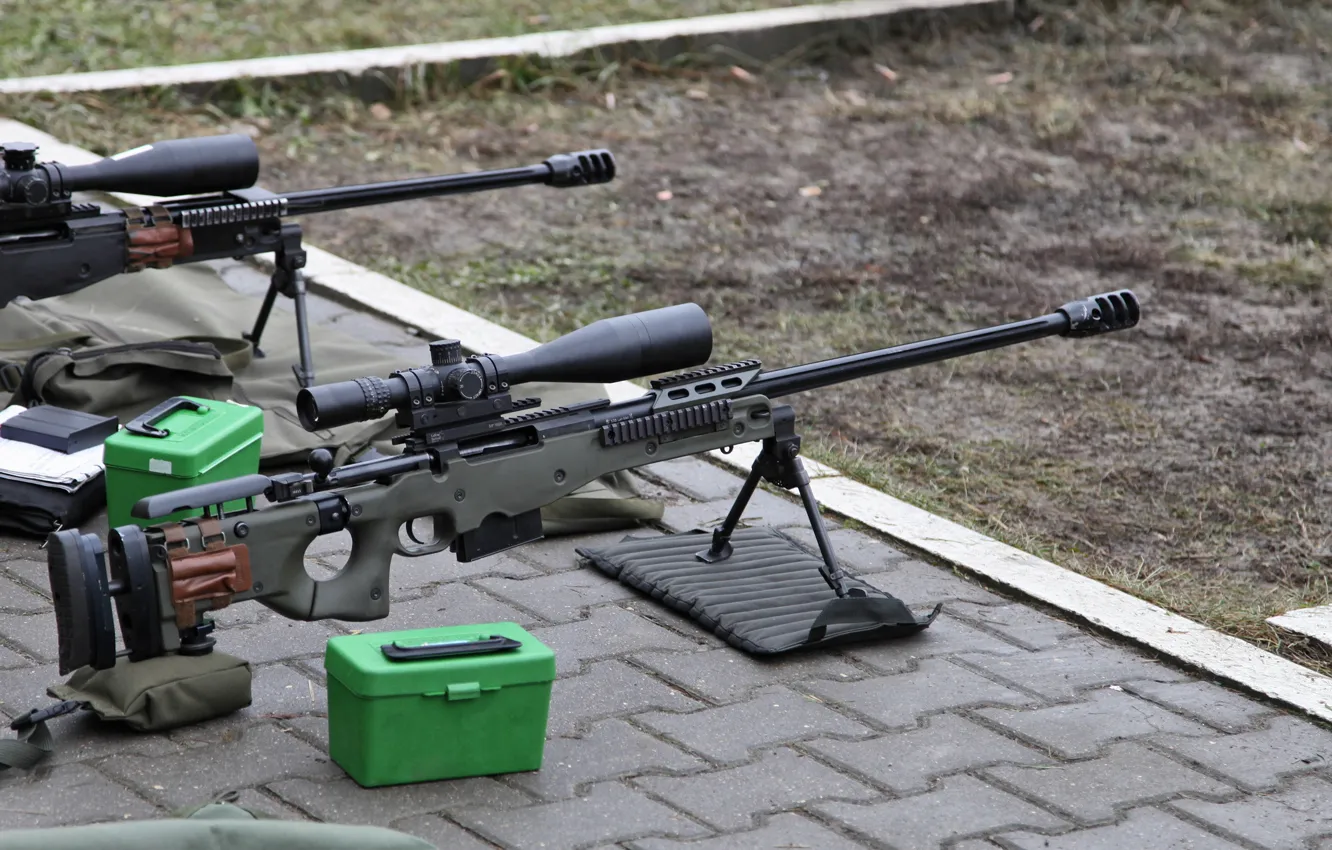
- The Arctic Warfare Magnum (AWM) is a British sniper rifle. It is a product of Accuracy International company. It is a more powerful version of the Arctic Warfare sniper rifle, designed to use larger and more powerful Magnum-type cartridges. The word “Magnum” in the designation denotes the Magnum chambering. There are two main versions of this weapon, chambered for .300 Winchester Magnum and .338 Lapua Magnum ammunition. This weapon was adopted in 1996. Version chambered for .300 Winchester Magnum is in service with the Czech Republic, Germany (locally designated as the G22), and some other countries. Another version, chambered for .338 Lapua Magnum was adopted by at least 14 countries, including Ireland, Israel, Italy, Malaysia, Netherlands, Norway, South Korea, and the United Kingdom. This sniper rifle saw action during wars in Iraq and Afghanistan. It is a bolt-action sniper rifle. Generally, the Arctic Warfare Magnum is similar to the original Arctic Warfare sniper rifle but has a longer bolt to accommodate the larger and more powerful Magnum-type ammunition. This weapon has a stainless steel 660 mm (26″) barrel. It is fed from detachable 5-round capacity magazines.
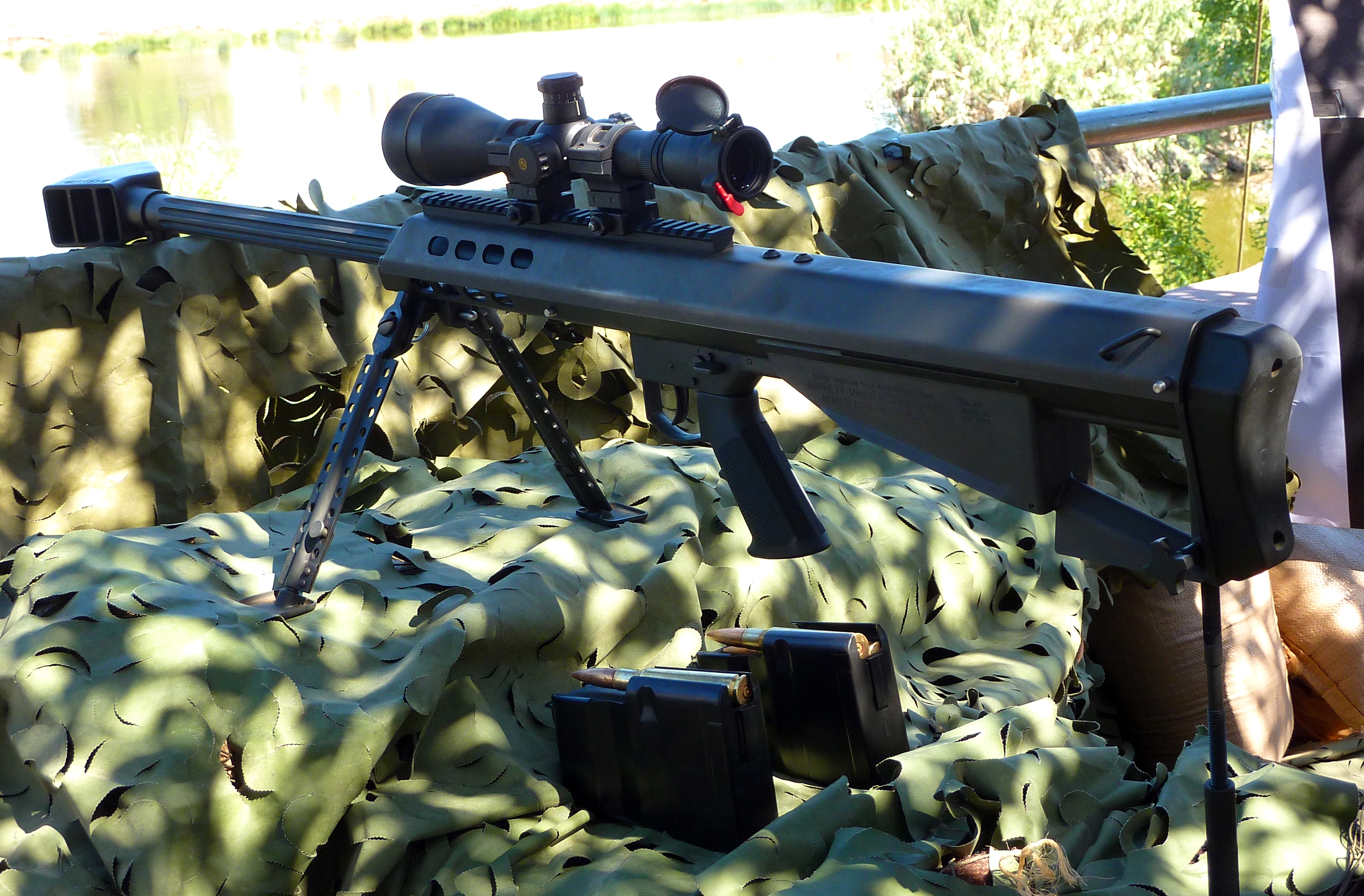
- The Barrett M95 is a manual bolt-action anti-material and a sniper rifle, designed by Barrett Firearms Manufacturing company. It is an improved production version of the Barrett M90. The major difference is that the pistol grip with the trigger has been moved slightly forward for better magazine clearance. Thus the new weapon is more comfortable to use. In 1995 the Barrett M95 replaced in production the original Barrett M90. The M95 is a company designation, rather than a US military designation. The number in the designation denotes the year 1995 when a working version of the rifle was ready. This weapon is proposed as a lighter, more compact, and manually-operated alternative to the semi-automatic Barrett M82. The M95 is chambered for a powerful 12.7×99 mm (.50 BMG) cartridge. This weapon comes with a 736 mm (29″) barrel. This sniper rifle has manual thumb-lever safety. The Barrett M95 can be easily field stripped for cleaning and maintenance. The weapon can be disassembled or assembled for cleaning within 60 seconds, without using any tools.
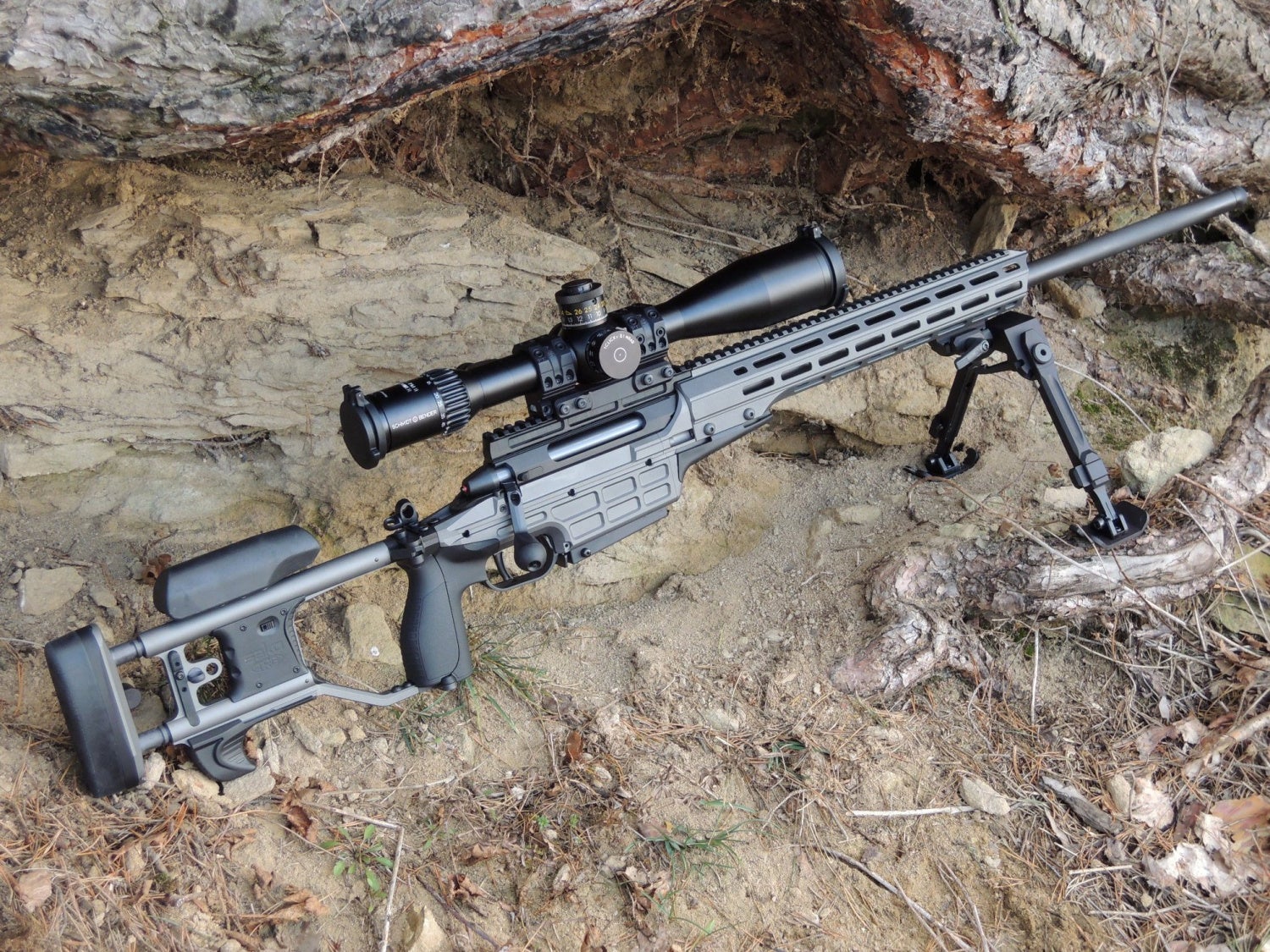
- The SAKO TRG 42 is a Finnish long-range sniper rifle. It is one of the best sniper rifles in the world. It is an improved production version of the previous SAKO TRG 41. Improvements of the TRG 42 over the previous TRG 41 include a new stock design. Also, this weapon was designed to handle more powerful cartridges with a maximum length of 95 mm. In 1999 the SAKO TGR 42 replaced in production the previous TRG 41. This sniper rifle is in service with at least 14 countries from all over the world, including the Finnish Defense Forces. It is mainly used by army units and special forces. Also, there are some law enforcement users.
- The SAKO TRG 42 is a manually-operated, bolt-action weapon. This sniper rifle is available chambered for .300 Winchester Magnum (7.62×67 mm) and .338 Lapua Magnum (8.6×70 mm) cartridges. Both versions come with 690 mm (27″) barrels. The performance of this rifle is comparable to British Accuracy International Arctic Warfare Magnum and Swiss Brugger & Thomet APR308 and APR338. The SAKO company also produces a less powerful TRG 22 sniper rifle, chambered for .308 Winchester cartridge, which is a standard NATO round. The version chambered for .300 Winchester Magnum cartridge has an effective range of 1 100 meters. Another version, chambered for .338 Lapua Magnum cartridge, has an effective range of 1 500 meters. Finnish Defense Forces’ designation of this sniper rifle is 8.6 TKIV 2000. The version chambered for a .300 Winchester Magnum cartridge has an effective range of 1 100 meters. Another version, chambered for .338 Lapua Magnum cartridge, has an effective range of 1 500 meters. Finnish Defense Forces’ designation of this sniper rifle is 8.6 TKIV 2000. The SAKO TRG series rifles can be easily recognized by their nearly vertical pistol grips. This sniper rifle comes with a black or green stock. The stock is fully adjustable. There is a version of this weapon with a folding stock.
- Derived from the Remington Model 700 rifle, the M24 SWS (Sniper Weapon System) is the primary sniper rifle of the US Army. It was developed in the 1980s to replace the Springfield Armory M21 and was first fielded in 1988. The M24 was effectively the Army’s first weapon developed especially for sniping. It is designated as a “weapon system” rather than simply a weapon because a detachable telescopic sight and a variety of tools and accessories are issued along with it as part of a single package. It is also employed by the US Air Force. The M24 is a bolt action rifle, feeding on a detachable box magazine holding either 5 or 10 rounds, depending on the model. It is tapped for either a Leupold Ultra M3A 10×42 mm fixed power, or a Leupold Mk 4 LR/T M3 10×40 mm fixed power scope. Iron sights are fitted as well, as a backup for the scope. The M24 is chambered for the 7.62×51 mm NATO round. Over 15 000 M24s were manufactured. They are presently used by the armed forces of Afghanistan, Brazil, Hungary, Iraq, Israel, Georgia, Japan, Lebanon, the Philippines, and the United States. Some law enforcement organizations also operate M24s. It is not offered for sale to civilians, but several companies manufacture similar or even nearly identical rifles for the civilian market.

- The R93 Tactical is a German sniper rifle, designed by Blaser Jagdwaffen. It is based on the Blaser R93 hunting rifle but has a detachable magazine, muzzle brake, and fully adjustable stock. Its production commenced in 1997. This weapon and its versions are used by a number of militaries, special forces, and law enforcement units from all over the world. Users of the Blaser R93 Tactical and its variants include Germany, Australia, Brazil, Bulgaria, France, Iceland, Malaysia, Netherlands, Poland, Slovenia, Ukraine, and the United Kingdom. Production of all R93 series rifles was stopped in 2017 in favor to the new R8 bolt-action rifle. The Blaser R93 Tactical is a bolt-action rifle. However, this weapon has a straight-pull action design, that was introduced in the Blaser R93 hunting rifle. This action is more comfortable to use and allows for faster follow-up shots compared to traditional bolt-action rifles. However, such a design is more complex. This weapon does not have a traditional receiver. Instead, it uses an aluminum receiver block, located underneath the barrel and bolt assembly. The Blaser company made its name for its quality and tight machining tolerances.
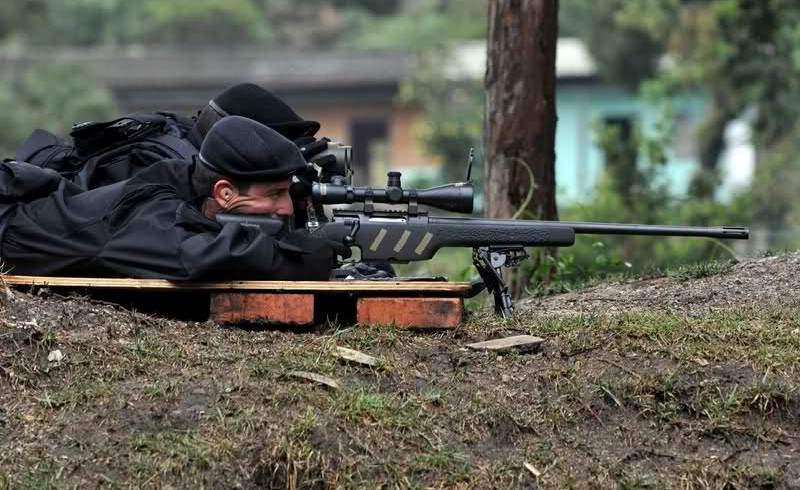
- The SIG Scharfschutzengewehr 3000, or SSG 3000, is a sniper rifle. Even though it looks like a hunting rifle, it is a combat-oriented weapon. This sniper rifle was specially designed for law enforcement forces and military use. Production of this sniper rifle was carried out in Germany. The SSG 3000 is widely used by law enforcement forces in Europe and the United States. It is also used by a number of military users and special forces units from all over the world. The SSG 3000 sniper rifle is no longer produced. The SSG 3000 is a bolt-action weapon, chambered for standard NATO 7.62×51 mm (.308 Winchester) ammunition. This sniper rifle comes with a 457 mm (18″) or 597 mm (23.5″) barrel. Look of the SSG 3000 changed throughout its production run due to new stock. The shape of the stock is similar, though the updated model has some minor differences. This sniper rifle was designed to withstand hard use. This weapon made its name for its high quality, durability, and excellent accuracy.

- The Arctic Warfare 50, or AW50, is a .50 caliber bolt-action anti-material and sniper rifle of British origin. It is manufactured by Accuracy International. This weapon is intended for highly trained special forces and elite law enforcement units. Since 1999 it is used by the British Special Air Service (SAS), Royal Marines, and various special forces across the world. Other operators are Australia (AW50F variant), Germany (G24), Ireland, New Zealand Army, Royal Malaysian Navy, Portugal‘s Republican National Guard, Royal Thai Navy. The rifle is based on its predecessor, the Arctic Warfare sniper rifle. To design the AW50 Accuracy International combined the target shooting performance at competitions with toughness and ruggedness required for the military service. Without a scope, the AW50 weighs 13.5 kg including all accessories but with an empty magazine. It has a hydraulic buffer system in its buttstock, so the recoil is reduced. In turn this feature increases accuracy and ease of operation. This rifle has an effective range of 1 500 m. Wide range of targets such as vehicles, boats and fortifications can be penetrated using the AW50. The standard 12.7×99 mm round (.50 BMG) has a penetrator with both high explosive and incendiary effect

- The McMillan TAC-50 is a long-range anti-material and sniper rifle, produced by McMillan Brothers Rifles company. Its designation denotes “tactical” and .50 BMG (12.7×99 mm) caliber. The TAC-50 was designed back in the 1980s. This weapon is based on the previous designs of the same company. However, this sniper weapon was first adopted only in 2000 by Canadian Armed Forces. This rifle is used by elite military and law enforcement units in various countries. The McMillan TAC-50 is used in Canada, France, Georgia, Israel, Jordan, Philippines, South Africa, Turkey and the United States. In Canadian service it is designated as the C15 Long Range Sniper Weapon. The TAC-50 is used by the US Navy SEALs, designated as the Mk.15. The McMillan TAC-50 can be used as a long-range anti-material weapon. This rifle can destroy sensitive enemy equipment, like parked aircraft, radar units, trucks and various other important assets at long range. It can be also used for remote destruction of explosive ordnance. The TAC-50 can be also used as a long-range sniper rifle. It can neutralize enemy snipers at standoff range. The rifle can be also used to hit enemy soldiers, that are hiding behind cover and walls, as its powerful ammunition can penetrate through bricks and concrete.
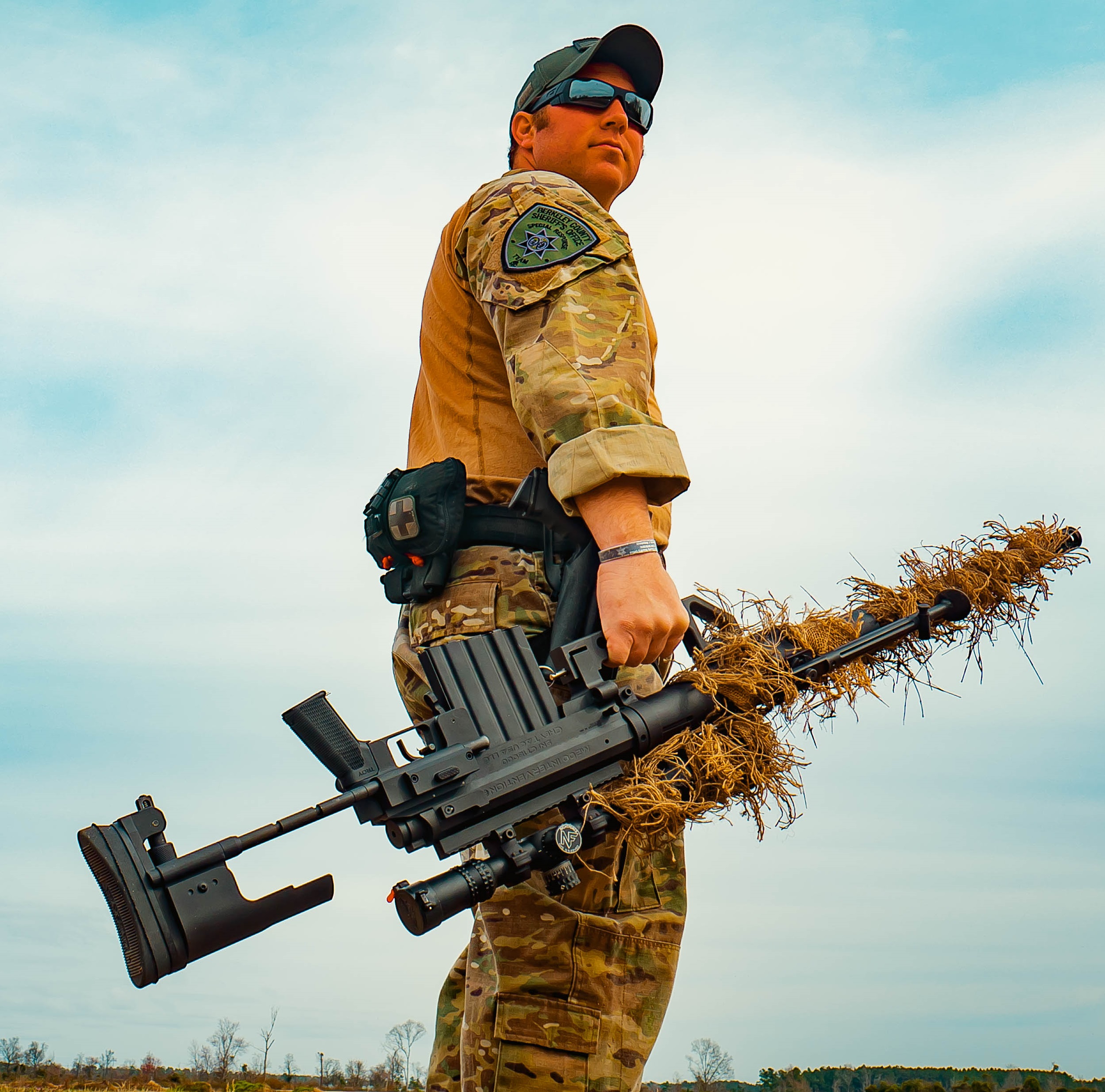
- The CheyTac M200 Intervention rifle is used only by some elite units, such as the British SAS, Polish GROM, as well as Italian, Singaporean and Turkish special forces. Some sources report that the US Navy SEALs are also using this weapon. Despite its impressive performance this weapon is not that popular. Possibly the main reason is that extreme range of the CheyTac M200 Intervention is not required in most tactical situations. Due to the large size of this weapon it is hard to move in and out of location. Also this weapon is too expensive to achieve widespread sales.
You can prepare for defence entrance exams such as NDA, AFCAT, INET, and CDS by taking Written Online courses as they will not only give you access to full-length quality lectures but will also provide the facility to take standardized mock tests for better study and strategic growth in the exam. You can take multiple quizzes after each lesson to ensure the full understanding of the subject along with creating your customized lesson plans. You can check out the course content along with other important specifics at SSBCrack exams.
You can also access them through the SSBCrack Exams app available in the google play store.
Jai Hind
